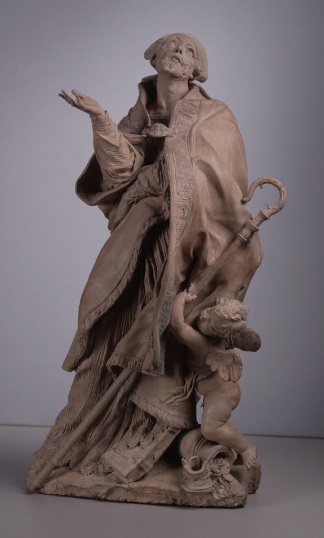Pierre Puget, The Blessed Alessandro Sauli as Saint Augustine, c. 1665-67

The Work
This sculpture is related to a large sculpture in marble, commissioned in 1664 for the church of Sainte-Marie de Carignan, in Genoa, Italy. The subject of the sculpture, Alessandro Sauli, was named Bishop of Pavia in 1591. Saint Augustine, the author of the Confessions and The City of God, is often considered to be the theologian who most influenced Christianity. Augustine is often represented with books or writing instruments.
Historical Moment
King Louis XIV was undertaking a reconstruction and enlargement of the palace of the Louvre. In France and in Italy, the decoration of royal palaces and churches provided work for a very large number of artists, who competed with each other to make artworks that were more and more awe-inspiring.
The Genre
This work exemplifies the "baroque" style, a word derived from a term that describes an irregularly-shaped pearl. The artistic characteristics of this style are movement, originality, and contrast, used to make the subject more dramatic. Baroque sculpture tried to show a person’s emotion, at a moment of spiritual intensity.
The Artist
Pierre Puget (1620-1694) was a sculptor, designer, painter, and architect. In the 18th and 19th centuries, many critics considered him to be the "French Michelangelo." He was greatly admired for the dynamic quality of his work and for his refined technique.

